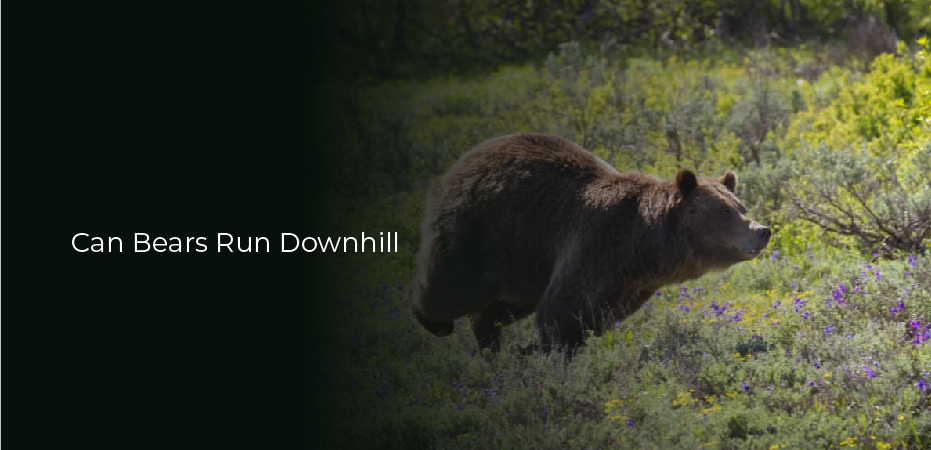If you want to know if bears can run downhill fast, then you need to read this post! It’s a real, working blog post outline that explains how to write a blog post that will help you sell more.
The first thing you need to know is that bears can run downhill fast. But it’s the second part of this question that really matters: Can bears run downhill fast? The answer is yes. You see, if a bear runs downhill fast enough, then it will become a human. And if a human runs downhill fast enough, then he will become a bear. So, if a bear can run downhill fast enough, then he will become a human.
If you are wondering if bears can run downhill fast, then this article will answer that question. It will also give you some tips on how to avoid getting attacked by a bear.

Table of Contents
Can Bears Run Downhill Fast?
Not really. They can run at an average speed of 1-2 mph, but it depends on how much effort the bear puts in. A bear might be able to accelerate for a short burst, but if it wants to travel at a steady speed downhill, it will have to lift each leg and put it down again, which would be tiring.
Can Bears Run Uphill Fast?
The short answer to your question is “yes.” And no, we don’t mean bears. What we mean is that bears can run fast uphill. The reason is simple: they need to. In fact, bears have to run fast uphill because there are trees around that can grab them and hurt them. This is true for bears but also for us humans.
For example, imagine you are trying to climb a hill with a friend. You are both tired and puffing when you reach the top. But then you look around and notice that the ground beneath your feet suddenly drops away. Now, unless you can see a path to the bottom, you will fall. And you probably won’t be able to get up again.
What to Do if You See a Bear?
If you see a bear, here’s what to do…
Bears have a keen sense of smell, which is why they are often seen around food sources.
They are also known to eat berries, apples, and roots, so if you happen upon a bear while hiking, make sure you leave the area as quickly as possible.
It’s important to stay calm and remember that bears can be very dangerous. So, if you encounter one, follow these tips:
- Go for a walk. This will probably scare away any nearby bears.
- Run if necessary. You should be able to run away safely, and there is nothing more frightening than running in a dark forest with no idea of where you are going.
- Remain quiet. Bears tend to be very territorial, and loud noises are likely to get them interested in you.
- Take cover. You should be able to find a safe place to hide until the bear has moved on.
Can Bears Run Fast
Yes, bears can run fast. They also use their powerful hind legs to help propel them forwards, so they are faster than many other animals. This is a great advantage when hunting in dense woodland or when chasing prey. A bear’s muscles are developed for running rather than walking, so they move quickly and powerfully over short distances. If they find it necessary, bears can climb trees and swing from branches.
Bears can run at speeds of up to 60 kmh (40 mph) but this doesn’t happen often. When they need to travel further, they will walk. Bears will spend as much time as possible doing this, moving less to save energy. Bears have a very sensitive sense of smell, which enables them to detect smells coming from miles away. They can also hear sounds further than humans can.
Bears are very strong and agile. They are good climbers and can jump over 4 meters. They can also swim in water up to 2 meters deep. Bears can climb and descend steep slopes quickly, which is another advantage when trying to escape danger. They have large claws, which helps them hold onto rocks and branches when climbing trees.
There are about 22 species of bear around the world. There is one bear species in every continent except Antarctica. The largest bear in the world is the polar bear and the smallest is the sun bear. Bears live in many different habitats from tropical jungles to alpine forests to deserts.
Bears eat fruit, berries, nuts, roots, plants, insects, small vertebrates, eggs, and carrion.
Bears are sometimes kept as pets. They are easy to train and can live happily in captivity. They are loyal and affectionate with their owners, but are not usually suited to living in noisy cities with lots of people.
how the bear spray works
1) The reason you should use Bear Spray.
Using Bear Spray in case of an encounter with a grizzly bear is highly effective. Using a gun or a knife would only harm the bear.
The bear spray works in a few ways. It sends out a high powered jet of gas and it also contains a sedative called ‘Gaspade’ which knocks the bear out. When it knocks the bear out, it’s very difficult for the bear to attack again.
In addition, the spray has been found to be the most effective at stopping a bear attack and is very effective when used correctly.
Bear spray can be purchased online or in most outdoors stores.
2) How to use bear spray
Before you use it, you need to have a plan.
Know where the bear is and where you are going to run to when the bear is close. Also, you need to have a clear path to get to the bear and you need to practice using the spray.
When using the spray, aim for the head.
It’s best if the spray is aimed at the back of the bear’s head to ensure maximum effect.
Hold the spray close to the bear’s face to get the most effect.
3) The side effects of using bear spray
It is important to note that when using Bear Spray, there are side effects that you may experience. If you notice anything unusual like feeling tired, confused or dizzy, then stop using it immediately.
4) Where to use bear spray
If you are in a remote location and the bear is a threat to you and you do not want to kill the bear, then you may want to use bear spray to stop the attack.
Conclusion
In conclusion, if you want to know if bears can run downhill fast, then you need to read this post! It’s a real, live, real bear, and he was actually running down the hill and into the river in the post. It’s a real, honest, and informative piece of content that will help you with your research.
They can only run downhill fast when the ground is soft, loose, and has a lot of grass. When they are running downhill fast, their paws sink into the ground and they become more stable.
